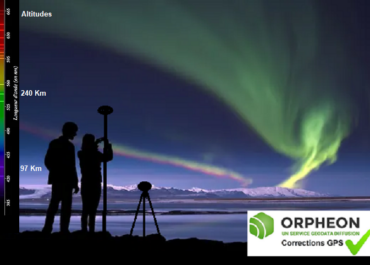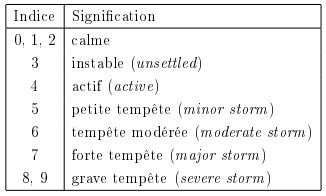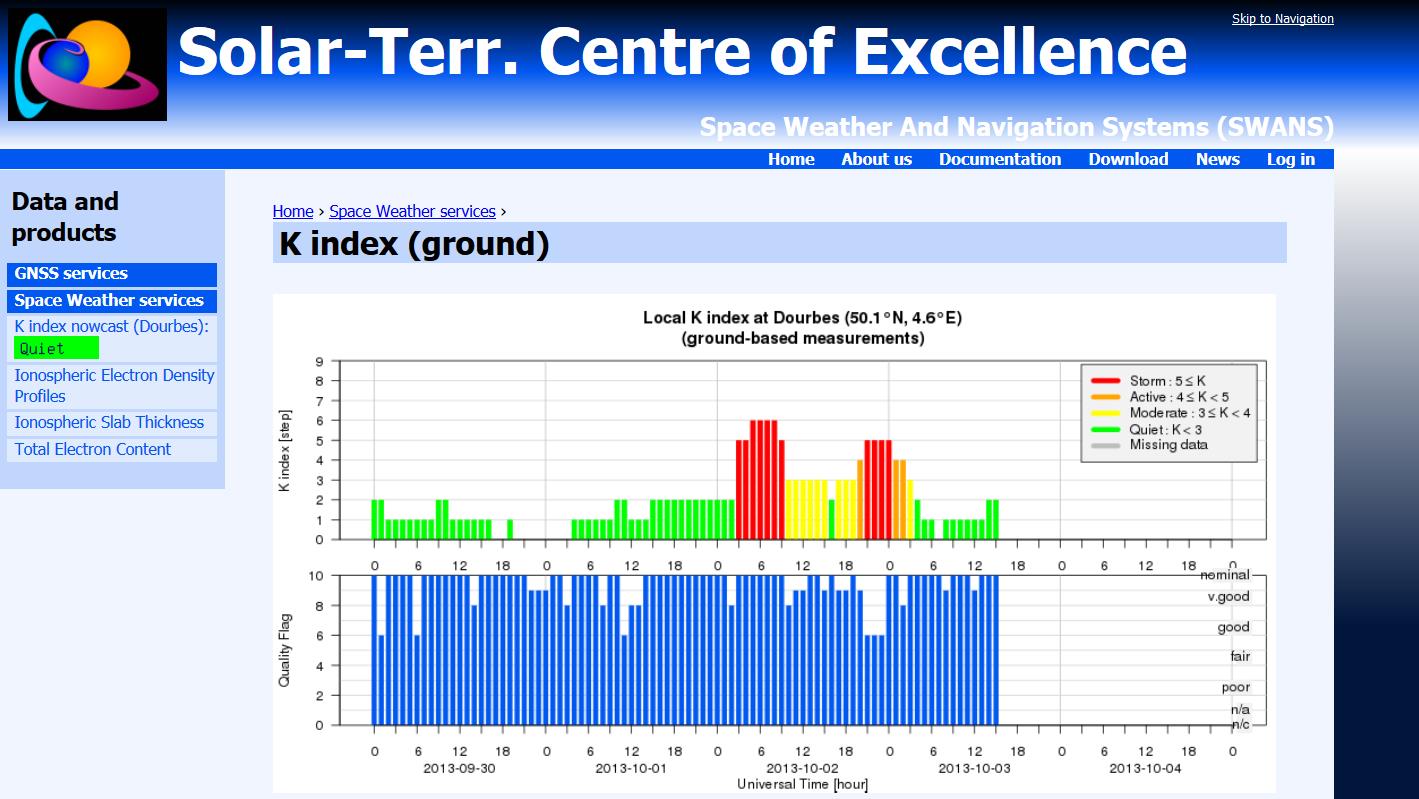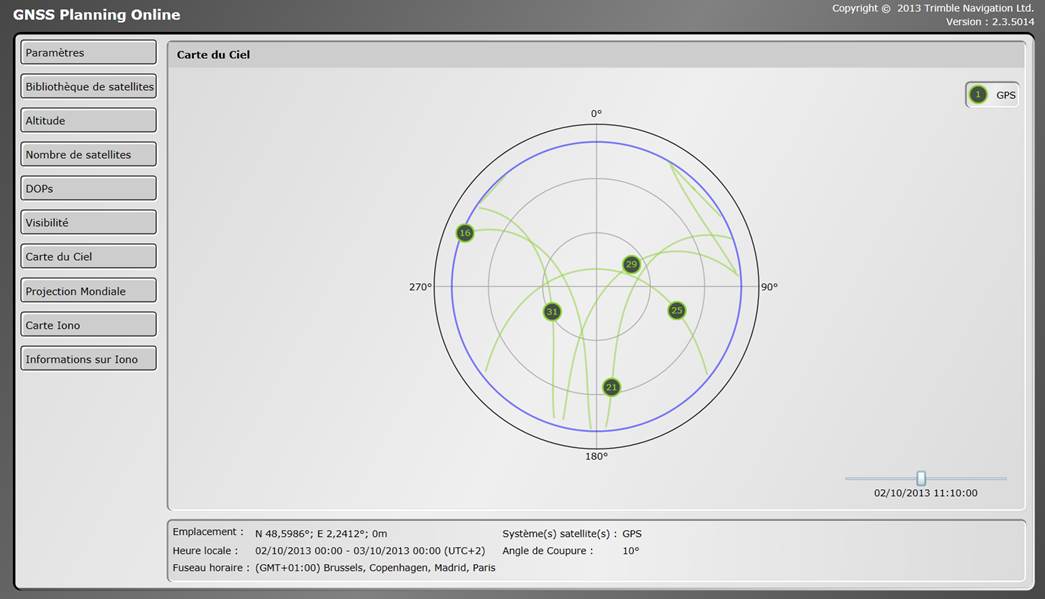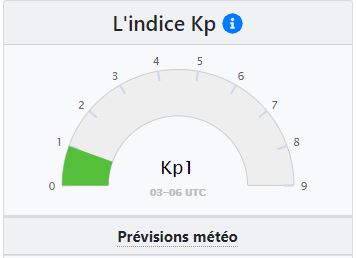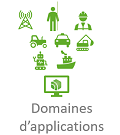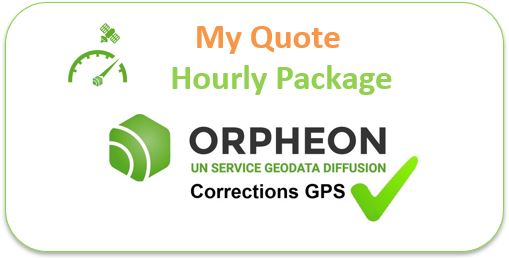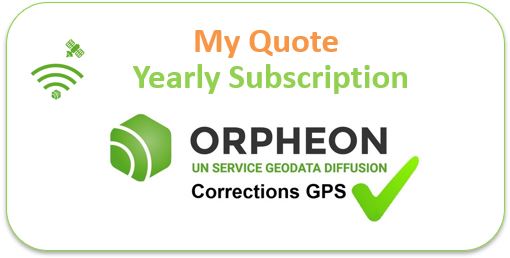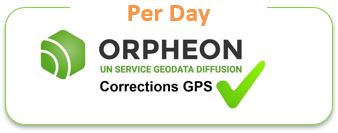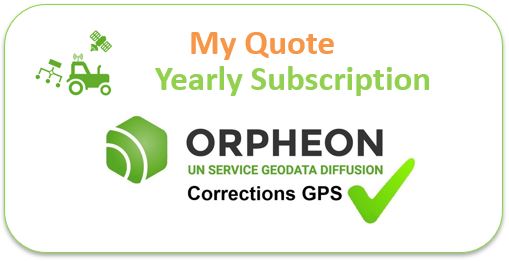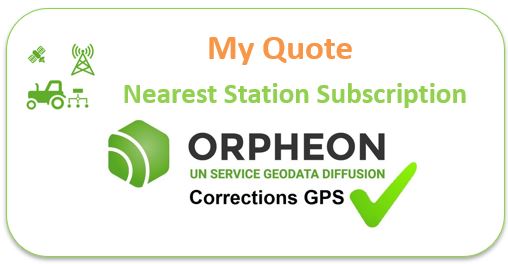… The best service, plus stability.
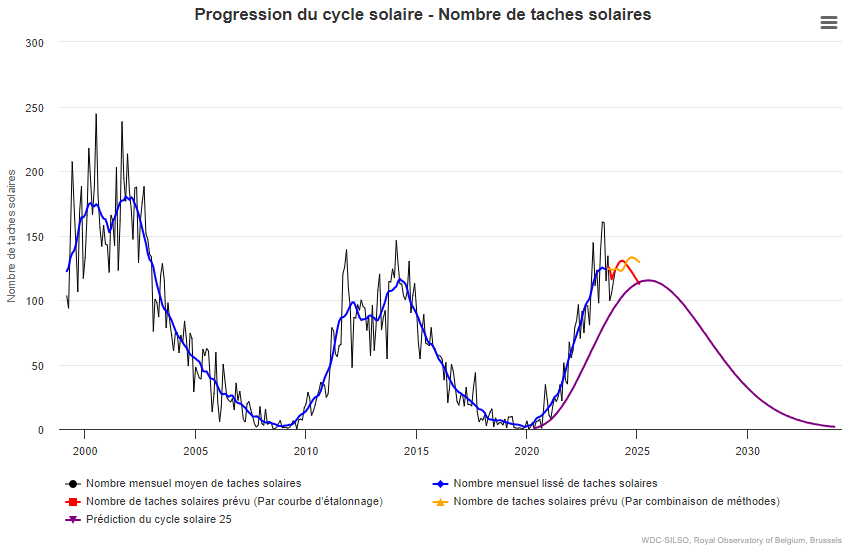 We observe the consequences of the combination of several factors which disrupt GPS positioning and our habits.
We observe the consequences of the combination of several factors which disrupt GPS positioning and our habits.
Concerning periodic phenomena, they have tended for years to be discreet but today they remind us in a more or less strong way.
It is therefore interesting to understand its origin and what impact it can have on our daily activities.
GPS / GNSS Positioning Accuracy Limits
The large distance traveled by the signal between satellites and GPS / GNSS receivers leads to a number of phenomena that influence the accuracy of GPS positioning.
The reception conditions at the level of the receivers also generate other phenomena. It is therefore the conjunction of all these factors that contributes to degrading precision.
Of all these sources of error, atmospheric refraction, responsible for ionospheric and tropospheric elongation, and orbital errors are the most problematic, as:
-
-
-
-
- they cannot be finely modeled beforehand (unlike electronic biases or antenna phase center variations),
- they cannot completely cancel each other out by multiple differentiations.
-
-
-
there are therefore “natural” factors that limit the accuracy of GPS / GNSS receivers. In order of their influence on the loss of precision related to refraction in the ionosphere.
This refraction is not constant and suffers the consequences of daily solar activity. It is therefore interesting to understand and monitor this activity and its influence on the operation of our instruments.
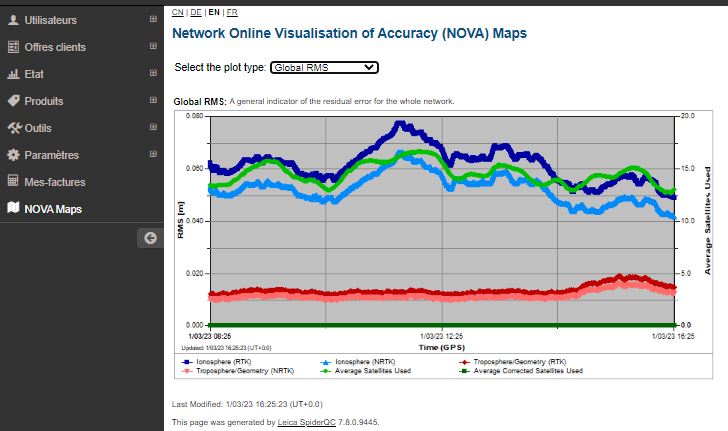
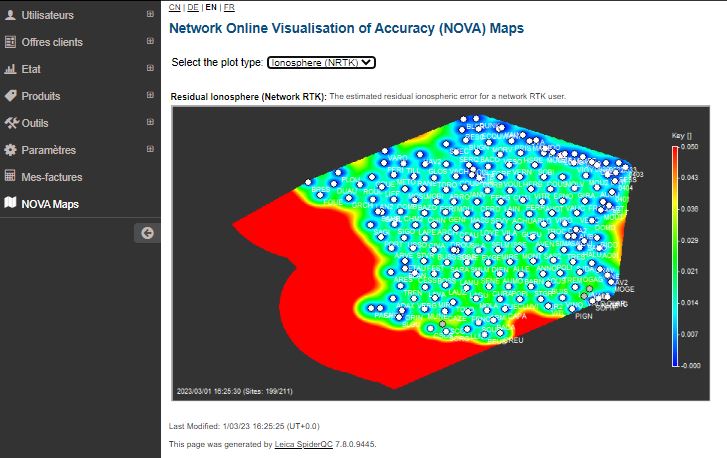
Intense solar activity

On October 2, 2013, all satellite networks around the world (GNSS, telecommunications, etc.)
suffered temporary disruptions due to intense solar activity.
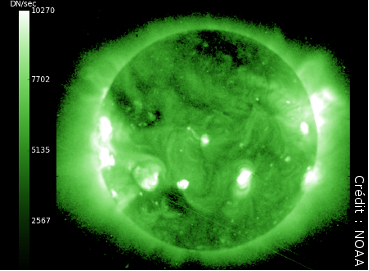
Solar eruption
The Earth can be compared to a magnetic dipole whose field protects the Earth’s atmosphere from energetic particles by deflecting them from their trajectory.
Fluctuations in the number, energy or speed of solar wind particles can cause a variation in the Earth’s magnetic field (orientation and amplitude) and therefore disrupt this magnetic shield system; we talk about geomagnetic disturbance.
The results
The consequences caused by solar phenomena such as eruptions or geomagnetic storms are numerous and varied: accelerated corrosion of pipelines, breakdowns of satellites or electrical networks, etc. Phenomena of solar origin also cause ionospheric disturbances which lead to a degradation of the precision of GNSS applications.
Currently, recent GPS positioning techniques based on the sending of differential corrections by a reference station (such as Real-Time Kinematic or RTK) generally make it possible to obtain precise positioning. of the order of a few centimeters in real time. However, the ionosphere constitutes the main limitation to the accuracy of these positioning methods.
By crossing this atmospheric layer located between 50 and 1000 km altitude loaded with electrical particles under the effect of the ionization of its molecules by solar electromagnetic radiation (ultraviolet), the GNSS signals are refracted, causing a lengthening of their path this which explains the positioning error of a GNSS receiver regardless of the satellite constellations used (GPS, Glonass, Galileo or Beidou).
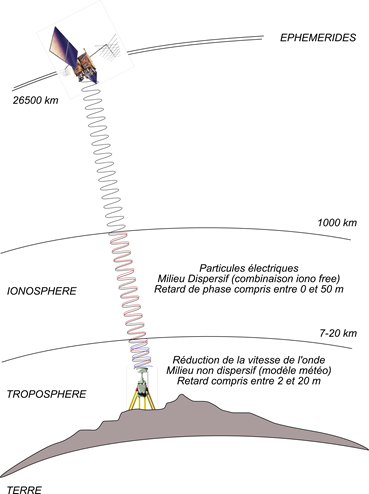
Regardless of the brand of equipment or the GPS, Glonass, Galileo or Beidou constellations used, no one really escapes it: these phenomena will affect everyone and affect your positioning accuracy to a greater or lesser extent.
Significant solar activity every 11 years
ISES Solar Cycle Sunspot Number Progression
Northern Lights
We have seen the consequences caused by solar phenomena such as eruptions or geomagnetic storms, but one that is particularly observable is the formation of the Northern Lights.
It is a colorful light phenomenon that occurs regularly in the night sky of the Northern Hemisphere. Charged solar particles (electrons and protons) strike the earth’s atmosphere and excite atomic oxygen or ionized nitrogen at high altitude, generating visible radiation whose colors vary depending on the altitude and therefore the content of oxygen and nitrogen more or less concentrated.
The more solar activity there is, the more particles the solar wind is loaded with and the more intense the auroras are on Earth. During extreme storms, it is possible to observe these northern lights well below the polar circle (as far as Corsica for example).
The cycle of solar activity from 2002 to today
Solar activity follows a periodic cycle of 11.2 years on average
Solar activity goes through a maximum during which its radiation increases and sunspots appear as well as eruptions releasing jets of ionized matter (coronal mass) into space causing geomagnetic storms (Moreton waves) which disrupt radio transmissions. , can disturb the Earth’s magnetic field and damage satellites in high orbit.
2014 – 2025 being maximums of this cycle.
The year 2020 was synonymous with the end of a cycle of decreasing ionospheric disturbances for our applications. We must expect in the future to have to deal with increased solar activity, hence the importance of having a dense network of permanent GNSS stations to properly model this error.
Other factors: Precession and Periodic Nutation 18.6 years
Furthermore, the axis of terrestrial rotation draws a circle on the celestial sphere (Precession). However, this circle is not perfect due to the attraction of the Moon, and to a lesser extent the Sun. Eccentricity is one of the factors adding to these disturbances because when it is maximum, the Earth at perihelion can receive up to 26% more energy from the Sun than at aphelion (also impacting natural climatic variations of the earth – John Imbrie). This periodic oscillation (Nutation) completes a complete cycle in 18.6 years. (Milankovitch cycles).
As you can see from the chart above, the solar activity cycle bottoms out in 2020 and forecasts for solar activity are now on the rise:
As the months passed, the number of sunspots quickly began to exceed predictions for a given month in mid-2020, which then accelerated in early 2021. As of March 2021, the number of sunspots was consistently well greater than the planned quantity, leading to a smoothed average greater than double what was planned.
Arriving in January 2023, NOAA had an average predicted value of 63.4, while the measured value reached 143.6!
Source : Site SpaceWeatherLive.com article du 08.02.2023
par Christian Harris
Daily variations
Over the course of a day, ionospheric activity linked to solar activity is maximum around 12:00 p.m. solar time. So as shown in the graph below, this ionospheric activity was very significant on Wednesday October 2 at noon with I95 index values beyond the limit of 8 indicating very high activity for the targeted applications and therefore impacting all communications satellites during their passage through the ionosphere then rich in charged particles:
The Weather of Disruptions
As you can see on the SpaceWeatherLive.com website which observes Solar Weather, this phenomenon is global with an ionospheric index K (quantification of geomagnetic disturbances). This is an average of the K indices relating to 13 stations located between 44 and 60◦ latitude; it is therefore a global index.
The K index is a local index which characterizes the variation of the magnetic field at the station considered compared to a calm reference day; these measurements are carried out using magnetometers. The Kp index scale includes 10 levels:
The levels of the Kp Index
When the Kp index is greater than 5, this corresponds to a geomagnetic storm:
Furthermore, in a completely uncorrelated manner, the distribution of GPS satellites is not optimal in this same time slot with a GDOP exceeding the limit set at 3 as shown below:
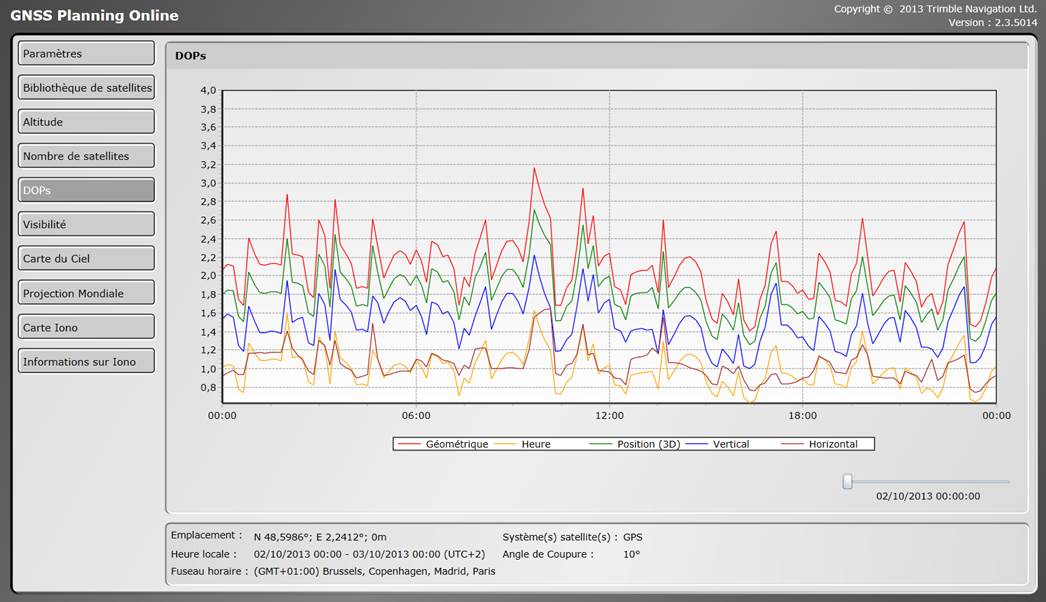
As a reminder, the DOP corresponds to a coefficient of weakening of the precision linked to the good distribution of satellites in the sky (calculation of the position of the mobile by spatial multilateration). The GDOP (General Dilution of Precision), ideally equal to 1, should not exceed 2 or 3 for precision positioning applications.
Beyond the notion of DOP, it is also necessary to have a minimum of 5 visible satellites beyond the fact that they are well distributed, which can prove complicated at this time of the day, this particular configuration linked to the very nature of GPS orbits advancing by 4 minutes per day:
Finally, as a reminder, GLONASS serves as an augmentation to GPS for the majority of GNSS mobiles, you need a minimum of GPS satellites (at least 4) well distributed to be able to work in GPS+GLONASS.
Predict the state of constellations on your construction sites
By following the following link, you will find a tool allowing you to visualize and predict the state of the constellations on your construction sites : http://www.gnssplanningonline.com/#/Settings
The impact on your connection
As you will have understood on this subject, if you have problems in the middle of the day (abnormally long time to fix the entire ambiguities or impossibility of fixing them in clear environments, repeated passages while floating even though you receive many corrections etc. .), check the number and distribution of GPS satellites and check the ionospheric activity via the site: http://gpsweather.meteo.be/geomagnetism/ground_K_dourbes.
Precautions
To limit the effects, certain precautions will make it possible to obtain better results such as moving away from these reflective surfaces or choosing equipment compatible with the different constellations but also with an antenna remote from the receiver and above all less sensitive to multipaths.
Unfortunately it is very difficult to decide on a given value because the impact of the disturbances will mainly depend on the exact place where you are.
- The disturbances fluctuate according to the zones and according to the times of the day
- In addition to the different disturbances, the impact can be different depending on the environment (buildings, trees, masks, multi-paths, number of satellites observed, etc.)
- The sensitivity of the hardware (its age, its software version, its calculation engine, the type of external antenna, etc.)
- The quality of the mobile internet connection (latencies etc.)
So among the essential recommendations in times of disruption (and especially if your Z elevation measurements are important):
- Monitor GDOP remains below 3 – 4,
- Respect sufficiently long point acquisition times
- Revisit the important points at least once after at least 20 minutes (allows you to see any discrepancies)
But also we recommend in case of sensitive measurements:
- Save raw observation data in Rinex format in parallel with your real-time field measurements (then allows you to control with post-processing).
- Check a posteriori the different states of your mobile during the measurement session thanks to your Orpheon customer area and the recorded logs (allows you to see if the mobile has fixed the ambiguities, or if it is floating, etc.)
The purpose of these precautions is mainly to have a certain degree of confidence in the measurements taken and to be able to determine which ones would potentially be more doubtful.
The strategic choice of your equipment
Today more than ever, the choice of your equipment is essential.
If for years these physical disturbances remained quite discreet, they may have led us to believe that all the GPS receivers on the market were equal and that they presented more or less the same performance.
As we well know, there are sometimes false economies. It is sometimes better to acquire equipment from a major manufacturer with less functionality but to be sure of its performance in adversity and difficult conditions in the field.
The strength of the Orpheon network
Our network is currently built according to the rules of the art with stations every 60 km, you should not normally be too affected. However, we wanted to pass on the information to you, an informed user is worth two!
The interest of Multifrequencies L1/L2 and L5
The use of multiple frequencies allows better rejection of repair signals, which allows a maximum of direct signals to be processed, which provides greater precision and greater positioning repeatability.
The positioning of the Orpheon network observation stations and the correction calculations based on the L1 and L5 frequencies emitted by the satellites make the positioning more resistant to interference and signal reflections, particularly in an urban environment.
Concretely, the initialization time and the delay to fix or convergence are significantly reduced as well as the repositioning times in the event of disconnection.
The highest availability rate on the market
The strength of the Orphéon network is to have been integrated into the largest European network to share infrastructures and the most qualified technical teams and to guarantee identical control procedures over the entire coverage area, continuous and regular reinforced monitoring of all stations and the network. This international technical team from a major manufacturer is responsible for supervising all the installations 24/365.
International expertise covering many countries
A choice of GNSS hardware and receiver for the network
The GNSS stations of the Orphéon network are all of the same brand, to limit measurement noise between sensors and allow 100% calculations of Full GNSS corrections in the network (GPS + GLONASS + Galileo + BeiDou). In addition, the stations are all the property of Geodata Diffusion, so as to ensure durability and performance.
The uncompromising choice of the hardware used to create the Orpheon network
All sensors and antennas are of the same brand so that electronic biases are perfectly controlled or at least constant in the network RTK calculation.
The station’s GPS/GNSS antenna is connected by an antenna cable to an electrical box housing:
- The GPS / GNSS receiver.
- A modem to connect it to our proprietary telecommunications network.
- All the automation necessary to restart the site remotely in the event of equipment unavailability.
- Split data transmission for higher availability

